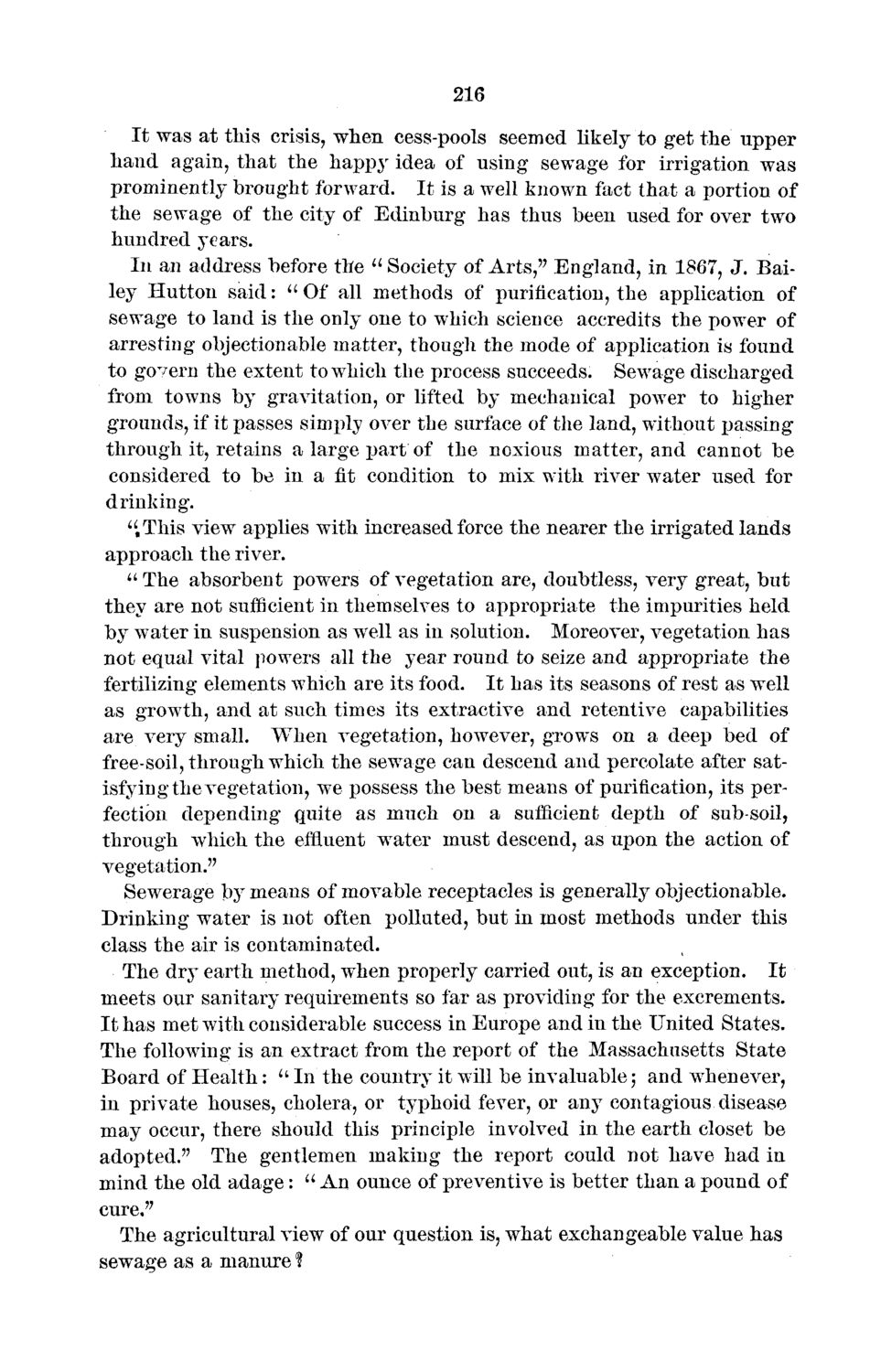| |
| |
Caption: Board of Trustees Minutes - 1872
This is a reduced-resolution page image for fast online browsing.

EXTRACTED TEXT FROM PAGE:
216 It was at this crisis, when cess-pools seemed likely to get the upper hand again, that the happy idea of using sewage for irrigation was prominently brought forward. It is a well known fact that a portion of the sewage of the city of Edinburg has thus been used for over two hundred years. In an address before the "Society of Arts," England, in 1867, J. Bailey Hutton said: " Of all methods of purification, the application of sewage to land is the only one to which science accredits the power of arresting objectionable matter, though the mode of application is found to govern the extent to which the process succeeds. Sewage discharged from towns by gravitation, or lifted by mechanical power to higher grounds, if it passes simply over the surface of the land, without passing through it, retains a large part of the noxious matter, and cannot be considered to be in a fit condition to mix with river water used for drinking. ".This view applies with increased force the nearer the irrigated lands approach the river. " The absorbent powers of vegetation are, doubtless, very great, but they are not sufficient in themselves to appropriate the impurities held by water in suspension as well as in solution. Moreover, vegetation has not equal vital powers all the year round to seize and appropriate the fertilizing elements which are its food. It has its seasons of rest as well as growth, and at such times its extractive and retentive capabilities are very small. When vegetation, however, grows on a deep bed of free-soil, through which the sewage can descend and percolate after satisfying the vegetation, we possess the best means of purification, its perfection depending quite as much on a sufficient depth of sub-soil, through which the effluent wrater must descend, as upon the action of vegetation." Sewerage by means of movable receptacles is generally objectionable. Drinking water is not often polluted, but in most methods under this class the air is contaminated. The dry earth method, when properly carried out, is an exception. It meets our sanitary requirements so far as providing for the excrements. It has met with considerable success in Europe and in the United States. The following is an extract from the report of the Massachusetts State Board of Health: " In the country it will be invaluable; and whenever, in private houses, cholera, or typhoid fever, or any contagious disease may occur, there should this principle involved in the earth closet be adopted." The gentlemen making the report could not have had in mind the old adage: " An ounce of preventive is better than a pound of cure," The agricultural view of our question is, what exchangeable value has sewage as a manure ?
| |